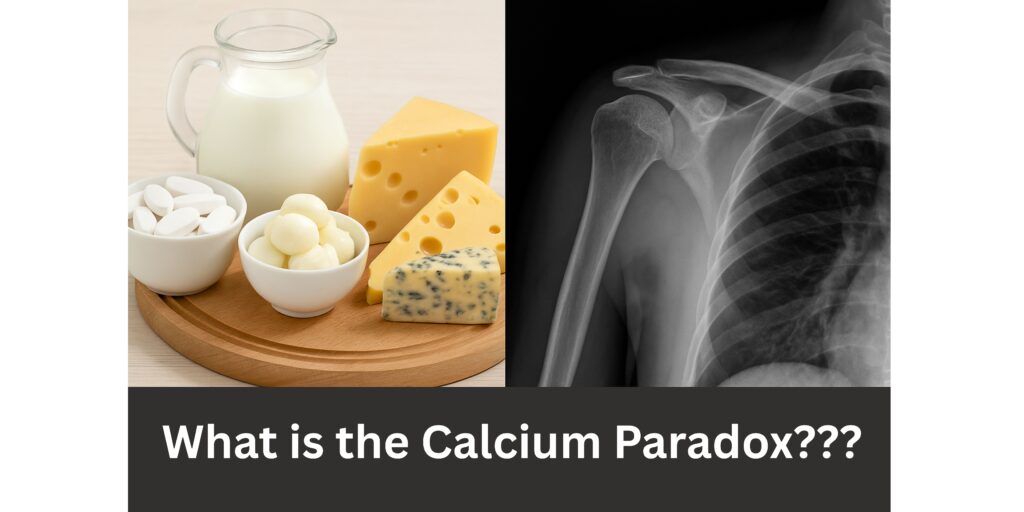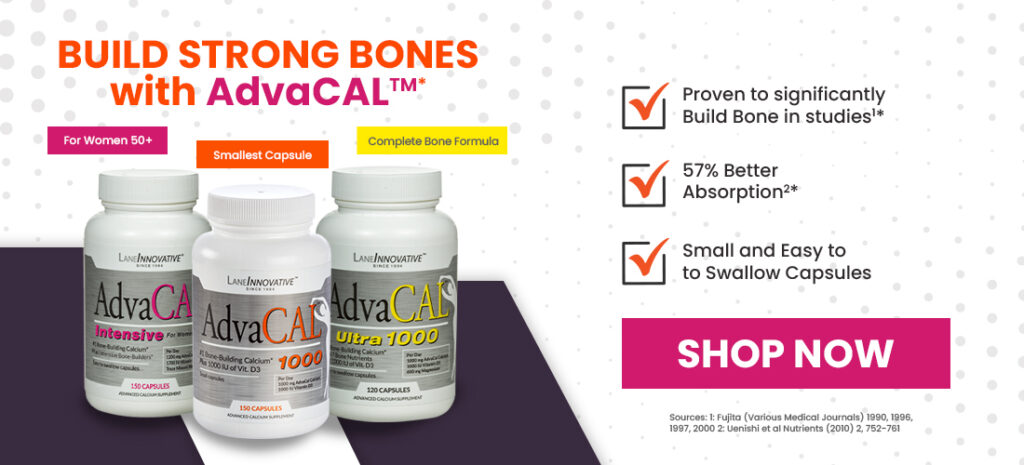Bone Health
The Calcium Paradox: Explaining the Mystery and Importance of this Phenomenon
The calcium paradox is one of the most puzzling discoveries in the study of bone health. It refers to the strange but well-documented phenomenon in which populations with higher calcium intake—such as those in the U.S. and Western Europe—suffer higher rates of bone loss and fractures, while populations with much lower calcium consumption, such as in Japan, experience stronger bones and fewer osteoporotic issues as they age.

This paradox sparked decades of scientific inquiry by Dr. Takuo Fujita, a pioneering physician and researcher in calcium metabolism. Through his work as professor of medicine and founder of the Osteoporosis Foundation of Japan, Dr. Fujita brought global attention to the reality that calcium intake alone does not ensure bone health. His key insight? It’s not how much calcium you consume—but how well your body absorbs and retains it—that matters most.
What Is the Calcium Paradox?
The calcium paradox was first described by Dr. Fujita as he compared bone health outcomes between Western and Japanese populations. In the West, calcium intake often exceeds 1,000 mg per day due to high consumption of dairy and supplements. Yet, these populations continue to experience high rates of age-related bone loss and fractures. Meanwhile, elderly Japanese adults, whose diets typically provide only 400–600 mg of calcium daily, enjoy stronger bones and far fewer hip fractures.
The paradox challenges the conventional wisdom that increasing calcium intake always leads to better bone health. Dr. Fujita argued instead that the aging body’s ability to absorb calcium declines significantly, meaning that simply taking more calcium is not enough—especially after age 50.
Why Calcium Alone Isn’t Effective
Dr. Fujita’s clinical research revealed that intestinal calcium absorption efficiency drops with age, particularly in postmenopausal women. As a result, large amounts of calcium may pass through the body without being utilized—and even worse, may accumulate in soft tissues such as blood vessels, joints, or kidneys. This inappropriate calcium deposition contributes to the risk of calcification-related complications while failing to support bones.
Dr. Fujita’s Scientific Solution: Enhance Absorption
This misdirection of calcium is at the heart of the calcium paradox. In older adults, more calcium doesn’t equal better bones—it may actually increase the risk of other issues if it’s not properly absorbed and directed.
To address this issue, Dr. Fujita conducted extensive research into improving calcium absorption. He developed and tested a marine algae-based calcium known as AAACa (Active Absorbable Algal Calcium), which is combined with a natural amino acid extract to improve intestinal transport of calcium. This amino acid complex helped stimulate calcium-binding proteins, increasing absorption even in older adults.*
In clinical trials, subjects who received AAACa demonstrated improved calcium retention, increases in bone mass, and measurable reductions in urinary calcium loss—especially compared to conventional calcium carbonate supplements.*
Dr. Fujita’s breakthrough was not in promoting more calcium, but in showing how to make calcium bioavailable and beneficial, particularly to those most at risk for bone decline.
Cultural Differences: Diet and Lifestyle
Part of the calcium paradox is cultural. The traditional Japanese diet is rich in vegetables, seafood, soy products, and fermented foods—but low in dairy. Despite lower calcium intake, Japanese elders maintain strong bones. Dr. Fujita noted that the combination of mineral-rich plant foods and lower intake of calcium-depleting substances (like sodium and animal protein) supports calcium conservation and bone metabolism.
In contrast, many Western diets are high in sodium and protein, which increase calcium excretion through the urine. This contributes to calcium imbalance, requiring even more intake just to break even—yet, without the cofactors for proper absorption, much of this calcium is wasted.
A Smarter Approach to Bone Health
Dr. Fujita emphasized a multi-factorial strategy for overcoming the calcium paradox:
- Focus on Bioavailability – Not all calcium is absorbed equally. Forms like AAACa, supported by amino acid transporters, deliver more calcium to bones than standard calcium carbonate or citrate.
- Support Absorption with Diet – Incorporate foods rich in magnesium, vitamin D, and other cofactors that help absorb and retain calcium.
- Avoid Calcium-Wasting Habits – Reduce excess sodium, caffeine, and animal protein intake, all of which can increase calcium loss through urine.
- Stay Physically Active – Weight-bearing exercise enhances bone remodeling and calcium retention.
- Prioritize Early and Lifelong Bone Care – Calcium absorption peaks in early life and declines with age. Support should begin early and continue throughout life, especially during postmenopausal years or periods of rapid bone turnover.
The Lasting Importance of the Calcium Paradox
The calcium paradox remains a vital concept in aging and nutrition science. Thanks to Dr. Fujita’s pioneering research, we now understand that calcium supplementation without effective absorption strategies may not improve bone health—and could contribute to soft tissue calcification instead.
His work laid the foundation for modern calcium formulations that consider absorption, retention, and nutrient synergy, not just milligram dosage. As supplement science evolves, the calcium paradox reminds us that the smartest approach is not more calcium—but better calcium, used more wisely.
References
- Fujita, T. (1996). Calcium Paradox: The Truth About Calcium Deficiency and How to Correct It. Japan Publications.
- Fujita, T. (1988). ‘Mechanism of Calcium Absorption in Aging.’ Journal of Bone and Mineral Metabolism.
- Fujita, T., & Ohue, T. (1994). ‘Clinical Evaluation of AAACa and Its Role in Preventing Bone Loss.’ Osteoporosis International.
- Osteoporosis Foundation of Japan – Educational Guidelines on Calcium Absorption and Retention.
Like? Share with Your Friends!

